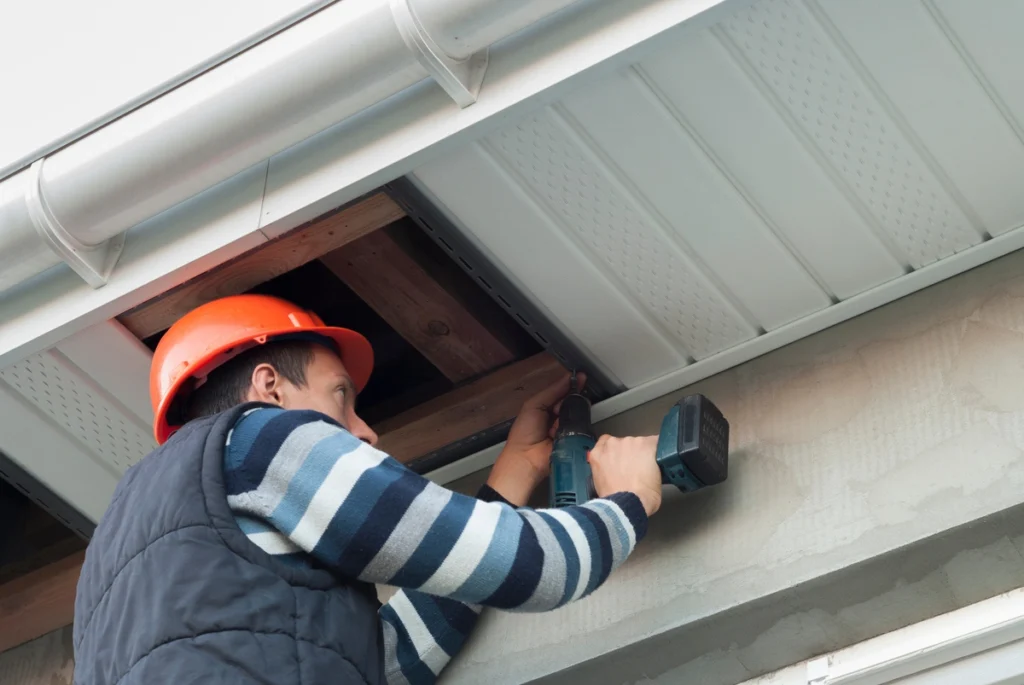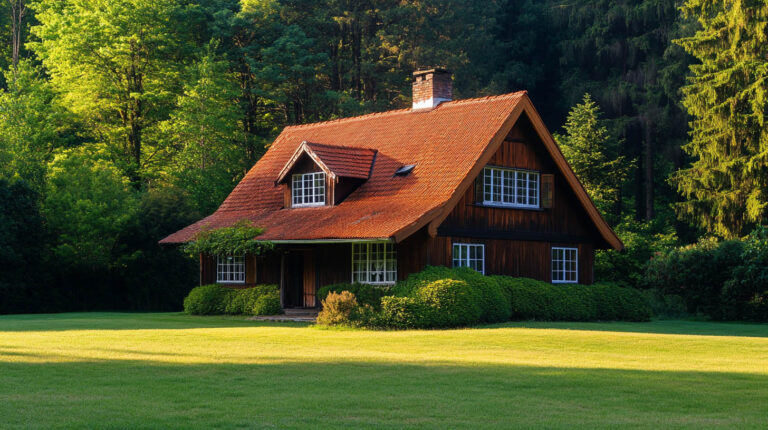
Blog
What Is A Soffit And Why Should You Care?
A Little About Soffits
Soffits play a crucial role in the structural integrity and aesthetic appeal of buildings. From providing ventilation to preventing moisture buildup, soffits serve multiple functions that contribute to the overall health and longevity of a structure.

That’s why in this blog, we will go into:
- What soffits are
- Why they are important
- The various styles available
- Signs of damage
- Maintenance tips
- The costs associated with installing new soffits
What is a Soffit?
To put it simply, a soffit is the underside of any architectural element, such as a roof overhang, balcony, arch, or staircase. It bridges the gap between the exterior wall and the roofline, enclosing the eaves and creating a finished look. Soffits are typically constructed using materials like wood, vinyl, aluminum, or fiber cement.
Why are Soffits Important?
Soffits serve several essential functions in a building:
- Ventilation: Soffits provide ventilation to the attic space, allowing air to flow freely and preventing the buildup of moisture and heat. Proper ventilation helps regulate indoor temperature, reduces the risk of mold and mildew growth, and prolongs the lifespan of roofing materials.
- Protection: Soffits protect the underlying structure of the roof and walls from weather elements such as rain, snow, and wind. They act as a barrier, preventing water infiltration and moisture damage.
- Aesthetic Appeal: Soffits contribute to the overall appearance of a building’s exterior. They can be customized to complement the architectural style of the structure, enhancing its curb appeal.

4 Different Styles of Soffits
Soffits come in various styles, each offering unique features and aesthetic options:
1) Continuous Soffits:
These soffits run continuously along the entire length of the eaves without interruption, providing a clean and seamless appearance.
2) Vented Soffits:
Vented soffits feature perforated panels or slots that allow air to circulate freely, promoting attic ventilation and reducing the risk of moisture buildup.
3) Beaded Soffits:
Beaded soffits have a decorative beaded groove pattern, adding texture and visual interest to the underside of the eaves.
4) Hollow Soffits:
Hollow soffits are lightweight and easy to install, making them a cost-effective option for homeowners. They are typically made of uPVC and come in a variety of colors and finishes.
Common Signs of Soffit Damage
It’s essential to inspect your soffits regularly for signs of damage or deterioration. Common indicators of soffit problems include:
- Water Stains: Water stains on the soffit panels or underside of the eaves are a sign of water infiltration, which can lead to rot and structural damage.
- Peeling Paint or Discoloration: Peeling paint or discoloration may indicate moisture damage or exposure to harsh weather conditions.
- Sagging or Warping: Soffits that appear sagging or warped may have been compromised by moisture or pest infestation.
- Cracks or Holes: Cracks or holes in the soffit panels provide entry points for pests and insects and can also allow water to seep into the underlying structure.
How to Take Care of Your Soffits

Proper maintenance is key to ensuring the longevity and functionality of your soffits. Here are some tips for taking care of your soffits:
🫧 Clean Regularly:
Remove dirt, debris, and cobwebs from the soffits using a soft-bristled brush or a gentle spray of water. Avoid using high-pressure washers, as they can damage the soffit material.
🔍 Inspect for Damage:
Conduct regular inspections to check for signs of damage or deterioration. Look for water stains, peeling paint, sagging panels, or any other visible issues.
🧰 Repair or Replace Damaged Panels:
If you notice any damage to the soffit panels, such as cracks, holes, or warping, repair or replace them promptly to prevent further damage.
👍 Maintain Proper Ventilation:
Ensure that attic vents are unobstructed and functioning correctly to promote adequate airflow and prevent moisture buildup.
✂️ Trim Overhanging Branches:
Trim back tree branches that hang over the roof to prevent them from damaging the soffits or providing easy access for pests.
Cost to Install New Soffits
The cost of installing new soffits can vary depending on several factors, including the material, size of the project, and labor costs. On average, homeowners can expect to pay between $600 and $2,000 for soffit installation, with the following breakdown:
- Material Costs: The cost of materials typically ranges from $2 to $10 per square foot, depending on the material chosen. Vinyl soffits are among the most affordable options, while materials like wood or fiber cement may be more expensive.
- Labor Costs: Labor costs can vary based on the complexity of the installation, accessibility of the eaves, and local labor rates. Expect to pay between $40 and $80 per hour for professional installation.
- Additional Expenses: Additional expenses may include permits, scaffolding or ladders, disposal of old materials, and any necessary repairs to the underlying structure.
We Take Care of Your Roofing System
Soffits are an integral component of any building, providing ventilation, protection, and aesthetic appeal. By understanding the importance of soffits, recognizing signs of damage, and following proper maintenance practices, homeowners can ensure the longevity and functionality of their soffit systems. While the cost of installing new soffits can vary, investing in quality materials and professional installation is essential for long-term durability and performance.
If you’re ready for an exterior soffit that keeps your home’s appearance aesthetically pleasing while helping with ventilation, contact the team on Avenue Roofing for expert guidance!



